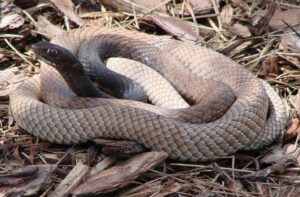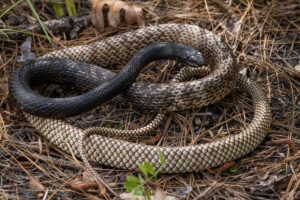Are coachwhip snakes venomous? It’s a question that often arises when encountering these sleek and agile reptiles. In the realm of snakes, venomous species command attention and caution, but distinguishing between venomous and non-venomous snakes is crucial for understanding their role in ecosystems and assessing potential risks.
Coachwhip snakes (Masticophis spp.) are not venomous. They are non-venomous constrictors, relying on their speed, agility, and powerful constriction to capture and subdue prey. Despite their intimidating appearance and lightning-fast movements, coachwhip snakes pose no venomous threat to humans.
Instead, they play a vital role in controlling rodent populations and maintaining ecological balance in their habitats.
Identification of Coachwhip Snakes

Coachwhip snakes are distinctive reptiles native to North and Central America, known for their slender bodies and whip-like tails. Here are some key features for identifying them:
- Coloration: Coachwhip snakes typically have a coloration that ranges from light tan or pinkish to reddish-brown or even black. Juveniles often have more vibrant colors, with bands or blotches that fade as they mature. Their coloration helps them blend into their surroundings, particularly in desert and scrubland habitats.
- Size and Shape: These snakes are long and slender, with adults ranging from about 3 to 7 feet in length, although some specimens can reach lengths of up to 9 feet. They have a streamlined body and a relatively narrow head compared to their body size.
- Head: Coachwhip snakes have elongated heads with a pointed snout, which helps them in hunting prey. Their eyes are large and prominent, aiding in locating prey items.
- Behavior: True to their name, coachwhip snakes are fast and agile, capable of moving swiftly both on the ground and when climbing. When threatened, they may vibrate their tails, which produces a sound similar to a rattlesnake’s rattle, serving as a warning to potential predators. Despite their intimidating behavior, coachwhip snakes are non-venomous and rely on constriction to subdue prey.
- Habitat: Coachwhip snakes inhabit a variety of habitats, including deserts, grasslands, scrublands, and forests. They are particularly common in arid regions but can also be found in more humid environments.
- Range: They are found throughout much of the southern United States, from California to Florida, and extending into northern Mexico and parts of Central America.
- Diet: Coachwhip snakes are carnivorous and feed primarily on small mammals, birds, lizards, and occasionally other snakes. They are skilled hunters, using their speed and agility to catch prey.
Remember that while coachwhip snakes can be mistaken for venomous species due to their coloration and behavior, they are harmless to humans. However, it’s always wise to observe snakes from a safe distance and avoid handling them unless you’re trained to do so.
Are coachwhip snakes venomous?
Coachwhip snakes, scientifically known as Masticophis flagellum, are non-venomous colubrid snakes native to North and Central America. Despite their intimidating appearance and aggressive behavior when provoked, coachwhip snakes do not possess venom glands or fangs to inject venom into their prey or predators.
Instead, they rely on their speed, agility, and powerful constriction to subdue their prey, which mainly consists of small mammals, birds, and lizards.
Their name “coachwhip” comes from their resemblance to a coach whip, a type of whip historically used to drive horse-drawn coaches. Coachwhip snakes are known for their long, slender bodies, which can measure up to 8 feet in length, and their keen sense of sight and smell, which helps them hunt effectively.
While coachwhip snakes may strike if threatened or cornered, their primary defense mechanism is to flee, utilizing their incredible speed to escape from potential predators or perceived threats. They are generally shy and elusive creatures, preferring to avoid confrontation whenever possible.
Understanding Coachwhip Snake Venom

Coachwhip snakes, scientifically known as Masticophis flagellum, do not possess venom glands or produce venom. They are non-venomous colubrid snakes, relying on their speed, agility, and constricting abilities to subdue prey. Their primary diet includes small mammals, birds, and lizards, and they use their keen senses to locate and capture their prey.
While coachwhip snakes may exhibit defensive behaviors if threatened, such as striking or vibrating their tails (which can produce a sound resembling a rattlesnake’s rattle), these behaviors are not associated with venom delivery. Instead, they rely on their ability to escape quickly to avoid danger.
It’s essential to understand the distinction between venomous and non-venomous snakes, as misidentification can lead to unnecessary fear or harm to these beneficial creatures. Coachwhip snakes play a vital role in their ecosystems by helping to control populations of rodents and other small animals.


